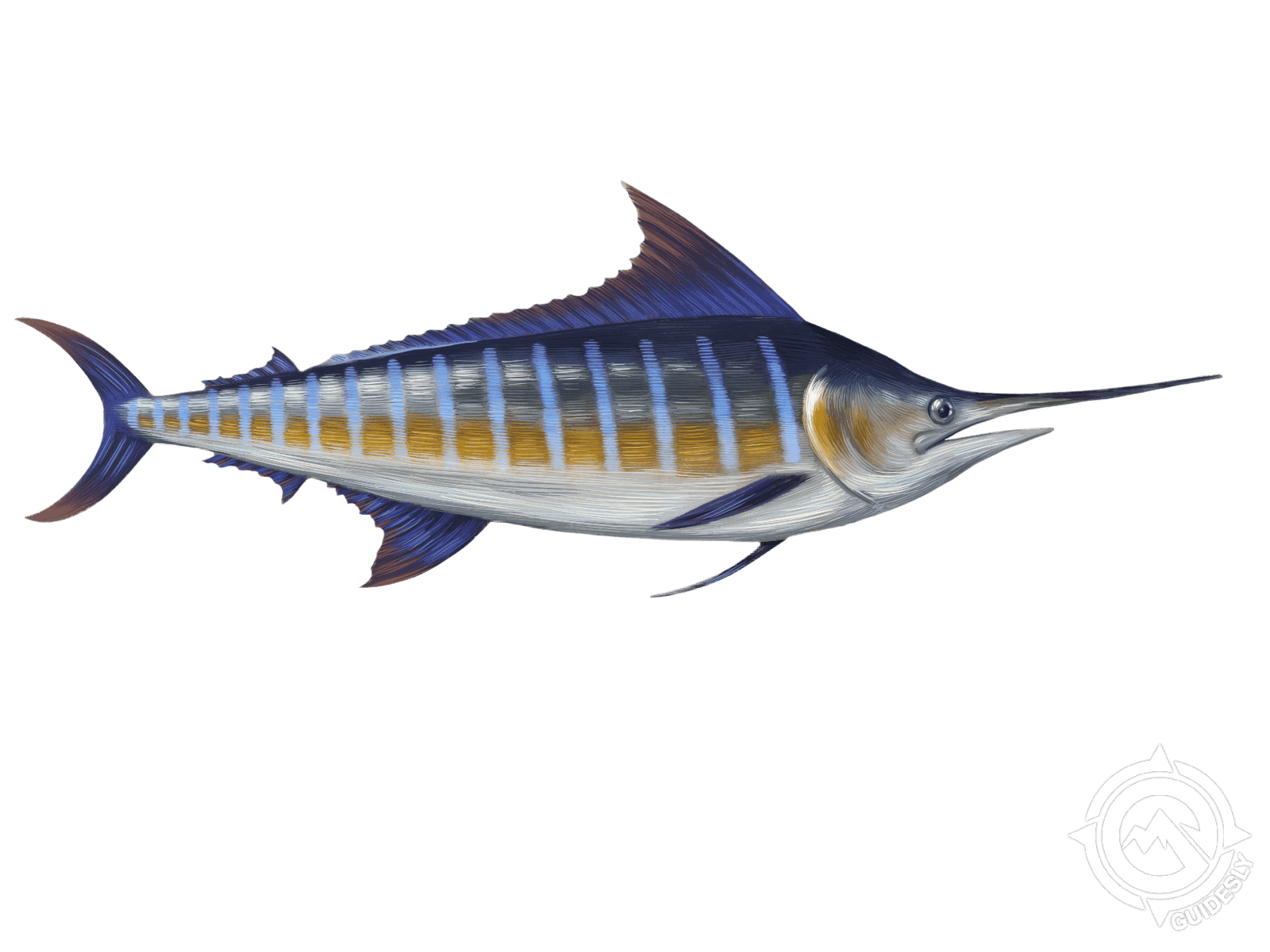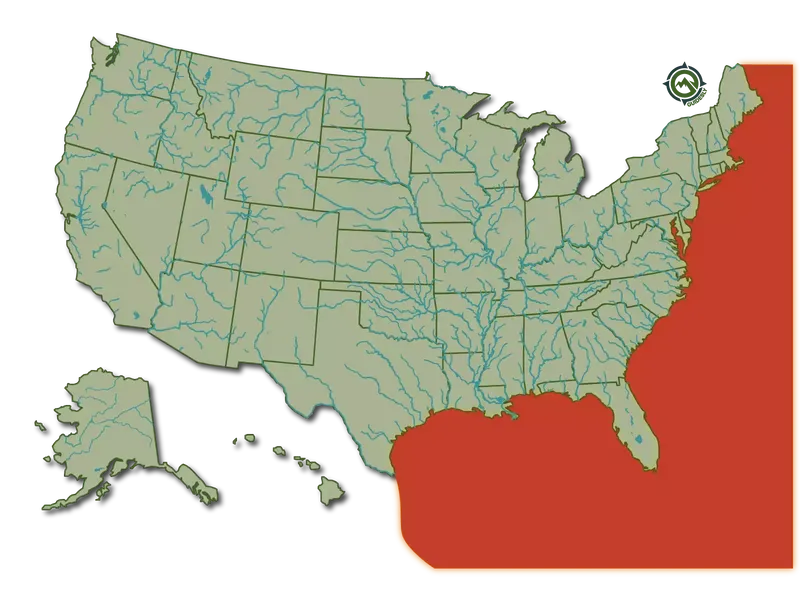Blue Marlin

Species Details
Makaira Nigricans
Istiophoridae
Perciformes
Offshore, Open Water
200 - 400 lbs.
132" - 197"
Blue Marlin (Makaira nigricans) Fish Description
The Blue Marlin may look slightly similar to the White Marlin but there are clear cut differences. The first most noticeable difference would be the dorsal fin wherein the Blue Marlin’s never exceeds the maximum body depth. Another difference for the Blue Marlin is its pectoral fins which are foldable. Unlike the others, the Blue Marlin also has a cylindrical body.
The Blue Marlin also has a dark cobalt dorsal side which slowly blends with the silvery-white underbelly. It also has several bars that are cobalt and pale-colored that decorate the rest of its body. Blue Marlins also have the ability to change their skin color. Their bodies, like other billfish, are covered by iridophores which allow them to reflect the light to change the color of their skin.
As a billfish, Blue Marlins have a long spear-like snout which serves as their weapon for finding more fish.
Blue Marlin Diet
Young Blue Marlin eat zooplankton but can sometimes eat fish eggs that drift by. However, as they grow older, Blue Marlins start feeding on larger fish. They eat Mackerel, Bullet Tuna and, Skipjack Tuna which serve as a big portion of their diet. Once Blue Marlins reach an optimum size, they are also reported to hunt down Yellowfin Tuna and Big Eye Tuna.
Blue Marlin Size
Interestingly, female Blue Marlins are four times bigger than male Blue Marlin. Female Blue Marlins can weigh 1190 to 1810 lbs and can reach a maximum length of 16 ft. Male Blue Marlins rarely exceed 350 lbs.
Interesting Facts about the Blue Marlin
- Blue Marlins are considered the biggest among all the Billfish species.
- Blue Marlins caught past 1000 lbs are called granders.
- In terms of lifespan, female Blue Marlins live longer than males. Female Blue Marlins can live up to 27 years while males only live up to 18 years.
- When they reach maturity, they become less of a target. However, the Blue Marlins can still be hunted down by the Great White Shark.
- Blue Marlins are migratory fish.
- Their path usually leads them to move tangent to the equator.
- Some people are afraid of eating Blue Marlin due to the high levels of Mercury in its meat.
Blue Marlin – Fishing Techniques: How to Fish for a Blue Marlin
Because they’re bigger, Blue Marlins are more prone to fatigue. However, Blue Marlins are known for their amazing acrobatics, their aggressive fighting spirits, and their powerful attacks.
Since they have a preference for warmer waters, Blue Marlins are best found near Hawaii, Panama, or Mexico. Depending on where you are, sometimes – Blue Marlins can be fished all year round being accompanied by their Black cousin. However, the size of the Blue Marlin will depend on your area.
As for the lure, there are a variety of lures you can use via trolling. In Kona, Hawaii, they developed a way on how to troll the Blue Marlin with an artificial lure. But that doesn’t mean live bait isn’t useful. As an apex predator, Blue Marlins love it if their prey puts up a fight.
For your equipment, make sure it's high, industrial grade. These are powerful, heavy fish. They can break your equipment if you’re not careful.

Blue Marlin Habitat and Distribution
Blue Marlin are migratory fish so you’ll have to run along the equator to find them. They’re usually found swimming across the waters running along the equator. They usually lurk in the Pacific, Atlantic, and Indian oceans especially when the waters are warmer. However, Blue Marlins seem to be available near the Gulf of Mexico all year round. Some also say that Blue Marlins are best caught in Kona, Hawaii.







